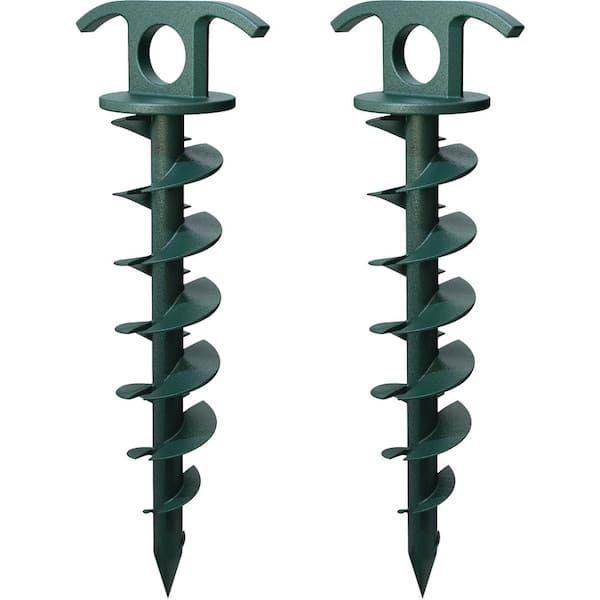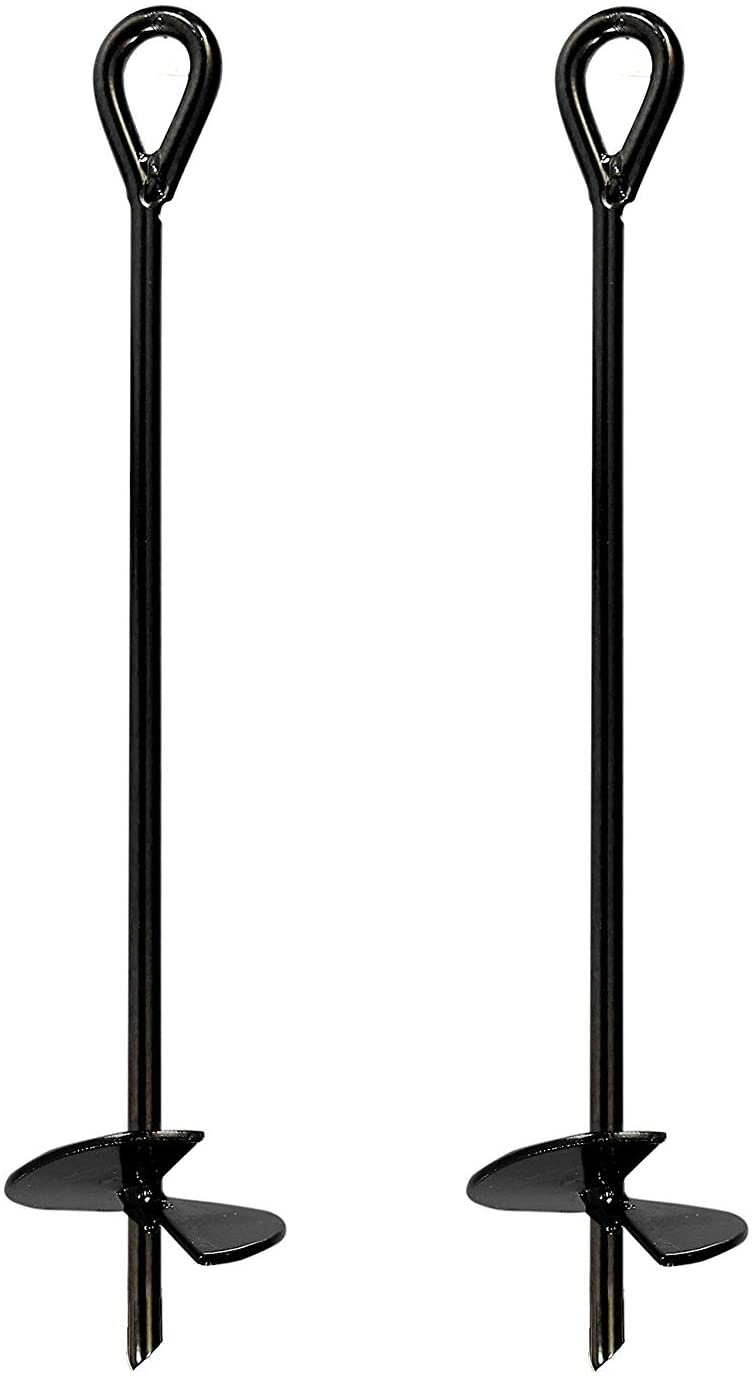Check Out the Different Sorts Of Ground Anchor for Your Following Job
When embarking on a building and construction or landscape design project, comprehending the numerous kinds of ground anchors available is important to making sure both stability and durability (Ground Anchor). From auger anchors, which succeed in diverse soil conditions, to risk supports made for momentary installments, the alternatives are many. In addition, concrete and screw supports existing unique benefits in specific circumstances, while deadman supports are tailored for applications requiring resistance to lateral pressures. The choice of an ideal anchor kind can significantly influence the overall success of your task, motivating further exploration into their corresponding advantages and applications.

Auger Anchors
Auger supports are a popular option in various building and construction and landscaping projects as a result of their unique design and reliable securing capabilities. These supports include a helical screw-like shaft that is driven right into the ground, enabling for a stable and secure hold. The spiral style facilitates simple installment and optimizes resistance versus lateral forces, making auger anchors especially efficient in applications such as fence, short-lived structures, and disintegration control.
The installation procedure of auger supports is relatively simple. Auger anchors can be conveniently gotten rid of and recycled, which adds to their cost-effectiveness and sustainability.
Among the considerable benefits of auger anchors is their capacity to disperse lots equally throughout the surrounding soil, decreasing the risk of dirt disturbance and reducing environmental impact. In addition, they are much less at risk to loosening or heaving with time contrasted to standard securing techniques. As a result, auger supports are an exceptional selection for tasks requiring dependable and resilient anchoring services.

Risk Anchors
When it involves securing structures in a selection of exterior applications, risk supports use a dependable and simple option. These supports are commonly created from long lasting materials such as steel or aluminum, made to withstand environmental tensions while providing optimal security. Their basic layout permits fast installment, making them an excellent choice for momentary or long-term anchoring requirements.
Risk supports are specifically helpful in securing camping tents, covers, and various other lightweight frameworks against wind and weather condition. They work by being driven right into the ground at an angle, producing a solid hold that stands up to pull-out pressures - Ground Anchor. The effectiveness of risk anchors depends on a number of elements, including dirt kind, dampness web content, and the angle of setup
For added security, many risk anchors come with accessory factors for straps or ropes, allowing for stress changes as necessary. In applications such as landscape design or construction, they can effectively stabilize tools or structures on unequal terrain. Overall, risk supports supply a functional and cost-efficient service for safeguarding different exterior installations, making them a preferred selection for professionals and DIY enthusiasts alike.
Concrete Anchors
Concrete supports supply a durable option for protecting frameworks to concrete surfaces, guaranteeing security and safety and security in numerous applications. These supports go to these guys are crucial for projects ranging from property building and constructions to large-scale industrial installments. They can be found in different types, including development anchors, sticky anchors, and undercut anchors, each designed for details tons needs and environmental conditions.
When set up,Expansion supports depend on mechanical devices to grasp the concrete. They are ideal for medium to heavy-duty applications. Sticky supports use high-strength epoxy or material to bond the support to the concrete, providing superior load-bearing capabilities, particularly in split concrete scenarios. Undercut anchors create a special form within the concrete, supplying exceptional holding power, especially in applications where tensile lots prevail.
Selecting the proper concrete support entails considering elements such as the weight of the load, the condition of the concrete, and environmental conditions. Correct installation techniques are crucial to guarantee ideal efficiency and dependability. When implemented correctly, concrete supports significantly enhance the architectural honesty of numerous projects, making them essential in contemporary construction practices. Understanding the specific requirements of your task will certainly assist in selecting the best kind of concrete support for the task.
Screw Anchors

Screw supports are a functional fastening service that can be successfully employed in a variety of applications where traditional concrete anchors may not suffice. These anchors contain a helical style that allows them to be conveniently driven right into the ground, making them perfect for usage in soil and other substrates. Their special structure offers outstanding holding power and resistance to pull-out forces, making them ideal for countless tasks, from landscape design to structural support.
One of the key benefits of screw anchors is their simplicity of setup. They need minimal equipment and can often be installed without the need for excavation, which conserves both time and labor prices. In addition, screw anchors can be gotten rid of and reused, using a sustainable remedy for short-lived applications.
Screw supports are particularly beneficial in areas where dirt problems are testing, such as loose or sandy dirts. Their ability to be set up at differing depths enables personalization based on certain project website here requirements. In general, screw supports provide a trustworthy and efficient anchoring method, making them a superb choice for contractors and designers looking for effective solutions for their projects.
Deadman Anchors
Deadman anchors serve as a robust solution for supporting frameworks in tough problems, especially where typical anchoring techniques may fall brief. These anchors consist of huge, heavy things buried underground, which produce resistance against side pressures. The design generally includes a horizontal element, such as a block of concrete or a metal plate, buried in the dirt, to which wires or bands are attached.
The performance of deadman anchors lies in their ability to distribute loads over a larger area, decreasing the threat of failing in unstable dirt problems. They are specifically helpful in applications such as keeping walls, short-lived frameworks, and incline stabilization, where soil motion can jeopardize the honesty of the framework.
Installment of deadman anchors calls for careful preparation to ensure they are positioned at the correct depth and alignment, maximizing their load-bearing ability. While they may call for more labor and material than light-weight supports, their dependability in adverse problems makes them vital for long-lasting jobs. Deadman supports are functional and can be adapted to numerous applications, making them a best selection for engineers facing unique difficulties in their jobs.
Verdict
Auger supports stand out in varied dirt problems, while stake supports suit short-term applications. For concrete surface areas, growth and adhesive supports provide reputable options, and screw supports offer adaptability in difficult visit homepage surfaces.
In addition, concrete and screw supports existing unique benefits in specific situations, while deadman anchors are tailored for applications needing resistance to side forces - Ground Anchor.Auger anchors are a popular choice in numerous building and construction and landscape design tasks due to their one-of-a-kind design and effective anchoring capabilities. They come in various types, consisting of development supports, glue supports, and undercut supports, each created for certain lots requirements and ecological problems
Glue anchors use high-strength epoxy or material to bond the anchor to the concrete, offering superior load-bearing capacities, particularly in fractured concrete scenarios. Generally, screw supports give a effective and dependable securing method, making them an outstanding selection for designers and service providers looking for reliable solutions for their jobs.
Comments on “Breaking Down the Various Options of Ground Anchor Systems for Various Uses”